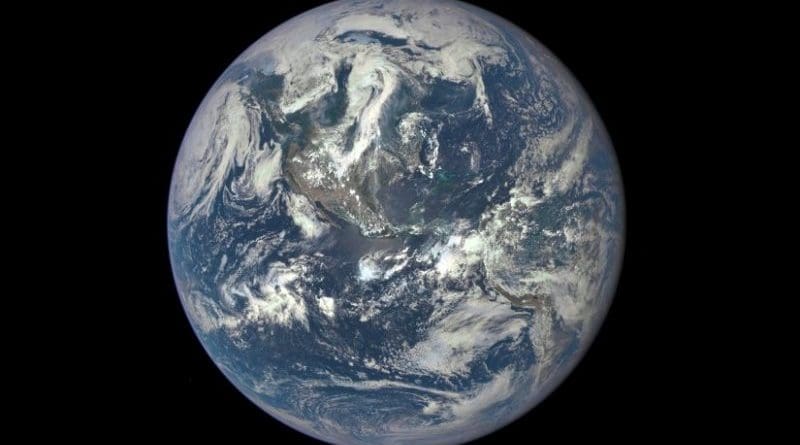Earth’s Plate Tectonics Recently Underwent A Fundamental Change
Earth is truly unique among our Solar System’s planets. It has vast water oceans and abundant life. But Earth is also unique because it is the only planet with plate tectonics, which shaped its geology, climate and possibly influenced the evolution of life.
Plate tectonics describes the movement and interaction of tectonic plates on Earth’s surface. This movement is driven by the very slow creeping motion of Earth’s mantle, called convection, which carry heat from the interior to our planet’s surface.
Researchers believe that convection in the mantle, which started shortly after Earth’s formation 4.5 billion years ago, occurs at the scale of the whole mantle. So, when plates collide at Earth’s surface, one gives way and sinks into the hot mantle and ends up in a sort of plate graveyard on top of Earth’s metallic core.
However, a new study from the University of Copenhagen published in the journal Nature suggests that this style of plate tectonics may be a more recent feature of Earth’s geologic history.
“Our new results suggest that for most of Earth’s history, convection in the mantle was stratified into two distinct layers, namely upper and lower mantle regions that were isolated from each other,” says Zhengbin Deng, former assistant professor at the University of Copenhagen and first author of the new study.
The transition between the upper and lower mantle occurs at about 660 km below Earth’s surface. At this depth certain minerals undergo a phase transition. Deng and colleagues believe that this phase transition may be the reason why the upper and lower mantle regions remained mostly isolated.
“Our findings indicate that in the past, recycling and mixing of subducted plates into the mantle was restricted to the upper mantle, where there is strong convection. This is very different from how we think plate tectonics operates today, where subducting plates sink to lower mantle,” says associate professor Martin Schiller who is also behind the new study.
To reach their conclusions, the scientists developed a new method to produce ultra-high precision measurements of the isotopic composition of the element titanium in various rocks. Isotopes are versions of the same element that have slightly different masses. The isotopic composition of titanium is modified when crust is formed on Earth. This makes titanium isotopes useful to trace how surface material like the crust is recycled in Earth’s mantle through geologic time. Using this new technique, they determined the composition of mantle rocks that formed as early as 3.8 billion years ago all the way down to modern lavas.
A primordial soup preserved in the deep Earth?
If recycling and mixing of tectonic plates was restricted to the upper mantle as postulated in the new study, it means that the lower mantle could contain undisturbed primordial material. The concept of a primordial mantle refers to a reservoir of mantle material that has remained relatively unchanged and preserved since the early stages of the Earth’s formation, about 4.5 billion years ago.
The idea that a primordial reservoir exists in the deep Earth is not new and has been suggested based on the isotopic composition of rare gases trapped in lavas from modern deep-seated volcanoes. However, the interpretation of these data is ambiguous, and some have suggested that this isotope signal comes from Earth’s core as opposed to the deep mantle. Because titanium is not present in Earth’s core, it provides a fresh perspective on this long-standing debate.
“Our new titanium isotope data allows to robustly identify which modern deep-seated volcanoes sample Earth’s primordial mantle. This is exciting because it provides a time-window into our planet’s original composition, possibly allowing us to identify the source of Earth’s volatiles that were essential for live to develop,” concludes professor Martin Bizzarro, also behind the study.

